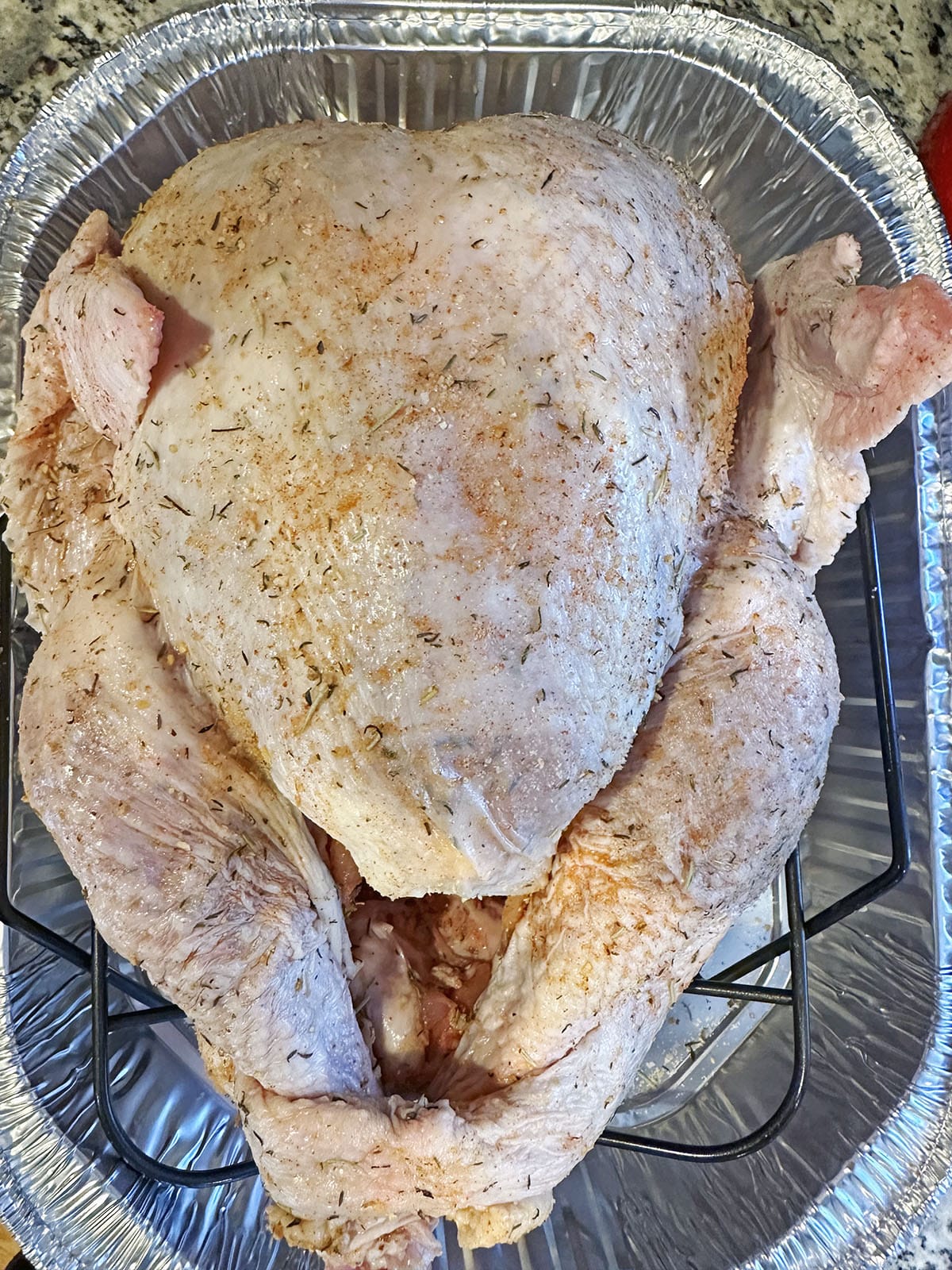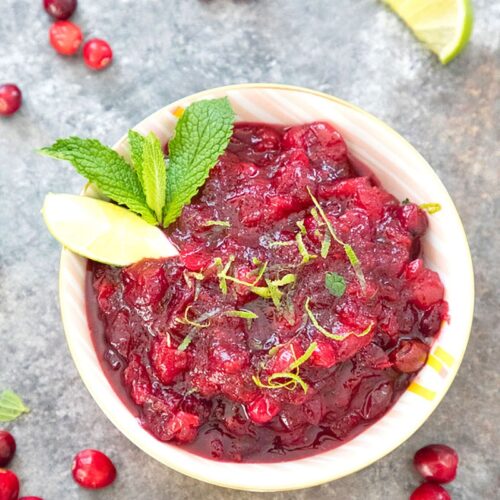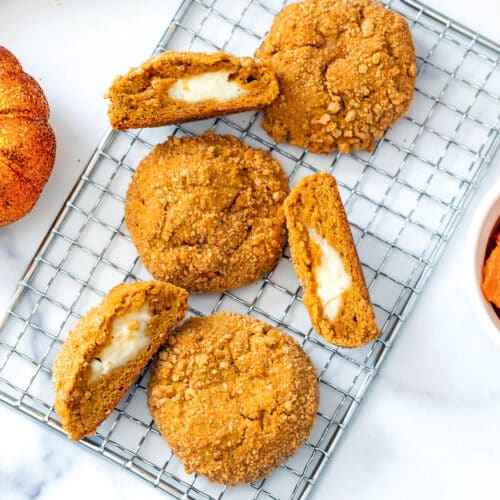Your Butterball turkey has been purchased and you're ready to host Thanksgiving dinner. Now what? This guide will help you learn how to cook a Butterball Turkey... Don't worry, it's easy!
Though this post is dedicated to cooking Butterball turkey, it can be utilized to cook whole turkeys from any brand or farm!

Jump to:
We've been working with Butterball Turkey for several years now and I think it's safe to say we've cooked a few Butterball turkeys in our time (at Butterball University, we learned 11 different ways to cook a turkey!).
And since it seems like lots of people have lots of questions about cooking Butterball turkeys, we decided to write this post teaching you how to cook a Butterball turkey.
One thing you should know is that cooking a turkey is easy. But it can be scary. Mostly because you're often cooking it for a crowd and because turkey has a reputation for often being dry and not so great.
We know the feeling of being intimidated by cooking a turkey but after three fantastic years working with the people at Butterball, we feel so confident sharing this with you!
For this post, I decided to show you how to cook a very basic turkey. You can obviously go above and beyond with how you prepare your turkey, but I want to keep it simple here just for the sake of showing you just how easy it really is!
🦃 How to cook a Butterball turkey
I hope you're reading this post at least a few days ahead of when you want to cook your turkey. But if not, hopefully a few of these turkey cooking tips will be helpful to you.
Step 1: If your turkey is frozen, you need to have a defrosting plan! Use this guide to learn how to thaw your Butterball turkey properly. Also note that thawing is the #1 question the Butterball ladies get on Thanksgiving from people who didn't plan in advance.
Remember you need days to fully thaw a frozen turkey! Specifically, an entire day for every 4 pounds of turkey.
For instance, a 16-pound turkey takes 4 days to thaw in the fridge. If you didn't plan enough thawing time for this, you can always do a cold water thaw.
A 16-pound turkey takes 8 hours to thaw in cold water. But you'll need to make sure the turkey is fully submerged in the water and replace the water every 30 minutes.
Step 2: To brine or not to brine? One of the awesome things about Butterball turkeys is that you don't have to brine them. They're already pre-brined with a salt solution! BUT that doesn't mean you can't brine them.
We often brine our Butterball turkeys and my family has always loved Alton Brown's recipe. The brine or not brine debate is already so hot, so it's really just up to personal preference and what you feel like doing.
If you do decide to brine, you'll also want to determine whether to do a wet brine or dry brine.
Lately I've been dry brining my turkey a day before roasting it and I love how it's turned out with a nice and crispy skin.

Step 3: Decide how you want to cook your turkey. For the purposes of this post, we're going to go with a simple oven roasting method. But at Butterball University, we learned to cook turkey 11 different ways. Yes, 11!
That includes grilling, deep drying, slow cooking, and even cooking a turkey in the microwave (yes, it can be done... But I don't really recommend it).
You can even use your smoker to make a delicious smoked spatchcocked turkey!
Step 4: Decide if you want to stuff your turkey. We never stuff ours and simply serve the stuffing (dressing) on the side. But if you want to stuff it, do so now. Just be sure you read the note below on taking the temperature of the stuffing!
Step 5: For the traditional roasting method, pre-heat your oven to 325 degrees. Remove the giblets and turkey neck and pat your turkey dry with paper towels.
You may or may not be surprised to know another big problem the Butterball ladies hear about is people who forget to take the giblets and neck out of the turkey before putting it in the oven (very important since they're in plastic packages!).
Step 6: Place turkey breast side up on a flat rack in a shallow roasting pan 2 to 2½ inches deep.
Step 7: Turn the wings back to hold the neck skin in place, so your turkey will be stabilized in the pan and for carving. Brush the skin with a little bit of olive oil, other cooking oil or butter. Rub the surface of the turkey and the cavity with salt and pepper, too, if you didn't brine it.
If you want, you can also rub turkey with fresh or dried herbs, minced garlic, and lemon juice.
You can do this a day ahead (as a dry brine) or right before roasting.

Step 8: Insert an oven-safe meat thermometer deep into the lower part of the thigh without touching the bone. The thigh is the thickest part of the turkey, so that's where you need to make sure the turkey is up to temperature and safe to eat.
BUT! If you stuffed your turkey, you'll also need to make sure the stuffing is up to temperature (165 degrees). Lots of people forget to do this and it's so, so important as the stuffing is actually what can make people sick.
Make sure to stuff turkey loosely (don't pack the stuffing in too much) and cook the turkey immediately after you stuff it.
If you don't have an oven safe instant read thermometer, you can simply take the temperature yourself when the turkey is close to being done. I couldn't live without my Thermapen for cooking meat!
Step 9: Cook turkey! See turkey cooking time calculator below to determine how long your turkey should roast depending on how much it weighs. When it's about ⅔ of the way done, loosely cover the breast with foil so it doesn't overcook (the breast will be done first, but the rest of the turkey needs more time!).
You'll know your turkey is done when the thigh is 180 degrees, breast is 170 degrees and stuffing (if applicable) is 165 degrees.

Step 10: Remove your turkey to a platter and let stand for about 20 minutes before carving and serving! For help carving, check out this guide.
Yes, it's that easy to cook a Butterball Turkey!

🔪 Useful tools for cooking a turkey
Cooking a Butterball turkey is easy, but it can be made even easier (and more delicious!) when you have the right tools at your disposal. Here are a few of the tools we like best (note some of the below are affiliate links):
- Turkey Roasting Pan: A turkey roasting pan is key for cooking the perfect turkey. Yes, you can purchase the disposable ones at the grocery store, but I often find them difficult to maneuver and lift. Purchasing a stainless turkey roasting pan is a great investment as it should last forever and can be used to cooking chickens and roasts throughout the year.
I linked to my favorite Le Creuset one above because I love it, but if you want to spend less money, this Cuisinart one is also a very good option. Whatever you purchase, make sure the pan comes with a rack and has handles.
- Meat Thermometer: I highly recommend you have a meat thermometer on hand as temperature is the best way to determine when your turkey is done. I absolutely love my ThermaPen (linked above), but if you're looking for a less expensive option, this meat thermometer has great reviews.
- Turkey Lifters: There's nothing worse than taking your turkey out of the oven and not knowing how you're going to get it from the roasting pan to the cutting board so you can carve it. Turkey lifters are a great tool to have on hand so you can seamlessly move your turkey without burning your hands or making a huge mess.
- Fat Separator: When it comes time to make the gravy, you'll be happy to have a fat separator, so you can easily get to the fat without waiting for the liquid to cool. Even if you don't make a lot of gravies, a fat separator can come in handy for healthier soups and stews, too.
- Large Carving Board: Having a good cutting/carving board is key for turkey time. Make sure you have a cutting board that's large enough to fit your turkey. I also highly recommend a cutting board that has a "juice groove" in in. Once you start carving, the turkey will release juices and the groove will really help keep your counters clean.
- Carving Knife: You don't need a carving knife to carve your turkey, but it will make your life a little easier and make for the prettiest turkey slices. You can also use it for carving pretty much any meat year-round. A carving fork will also help you keep the turkey steady while you carve.
- Brining Bags: If you are planning to brine your Butterball turkey (remember, you don't have to!), a brining bag will come in handy. Also make sure you have a container large enough to let your turkey brine in.

⏲️ Butterball turkey cooking times
For your reference, here are turkey cooking times determined by the weight of your Butterball turkey when your oven is set to 325 degrees.
4.5 - 7 lbs
Unstuffed: 2-2.5 hours
Stuffed: 2.25-2.75 hours
7-9 lbs:
Unstuffed: 2.5-3 hours
Stuffed: 2.75-4.5 hours
9-18 lbs:
Unstuffed: 3-3.5 hours
Stuffed: 3.75-4.5 hours
18-22 lbs:
Unstuffed: 3.5-4 hours
Stuffed: 4.5-5 hours
22-24 lbs:
Unstuffed: 4-4.5 hours
Stuffed: 5-5.5 hours
24-30 lbs:
Unstuffed: 4.5-5 hours
Stuffed: 5.5-6.25 hours.
For more information on how to cook a Butterball turkey, check out Butterball's handy guides on:
How to Know When Your Turkey is Done
And many other useful tutorials!
If you have any questions at all about preparing your turkey this Thanksgiving (or any time of year!) please feel free to ask me in the comments below! And more importantly, the Butterball Turkey Talk-Line is officially taking calls for the season so call 1-800-BUTTERBALL for any and all turkey-related questions you have.
These women are turkey geniuses, not to mention some of the sweetest people we've ever met, so don't ever feel nervous to give them a ring! They're here to help 🙂
Have you ever cooked a Butterball Turkey before?
🥧 More Thanksgiving recipes
If you're looking for some great Thanksgiving side dishes to serve along with your Butterball turkey, check out the following WANM recipes:
These Ginger Coconut Whipped Sweet Potatoes, Loaded Mashed Potatoes in Jars, and Red Skin Mashed Potatoes are also delicious.
And to make your Turkey cooking experience a bit more fun, enjoy my Pumpkin Pie Martinis or Cinnamon Pear Sangria!
📖 Recipe

Roasted Butterball Turkey
Ingredients
- 1 Butterball Turkey, 4 ½-30 lbs, fresh or fully thawed and unstuffed (see cooking times chart in the body of this post to determine how long you'll need to cook turkey for dependent on weight)
- Olive oil, other cooking oil, or butter
- Salt and pepper
- Optional: fresh or dried thyme, rosemary, sage, parsley; spices (I like paprika) minced garlic, lemon juice
Instructions
- Pre-heat oven to 325 degrees. Remove the giblets and turkey neck and pat turkey dry with paper towels.
- Place turkey breast-side-up on a flat rack in a shallow roasting pan 2 to 2½ inches deep.
- Turn the wings back to hold the neck skin in place, so your turkey will be stabilized in the pan and for carving. Brush the surface of turkey and inside the cavity with olive oil, other cooking oil, or butter and rub turkey with salt and pepper. If you want, you can also rub turkey with fresh or dried herbs, spices minced garlic, and lemon juice. You can do this the day before or right before roasting.
- Optional: Insert an oven-safe meat thermometer deep into the lower part of the thigh without touching the bone. The thigh is the thickest part of the turkey, so that’s where you need to make sure the turkey is up to temperature and safe to eat. If you don't use an oven-safe thermometer, you'll have to take the turkey out of the oven to do temperature tests.
- Place turkey in oven and roast until the thigh is 180 degrees and the breast is at 170 degrees (see notes section for stuffed turkey temperature). When turkey is about ⅔ of the way done, loosely cover the breast with foil so it doesn’t overcook (the breast will be done first, but the rest of the turkey needs more time). Please see the Butterball Turkey cooking times chart in the body of this post to determine how long it should take your turkey to cook.
- Remove turkey to a platter and let stand for about 20 minutes before carving and serving.
Video
Notes
- If you are cooking a stuffed turkey, please be sure to make sure stuffing registers at 165 degrees before removing from oven.
Useful Products
View Web Story for this post.
View Web Story for this recipe.





















Deanna says
LOL you guys are funny. My sister has selected the turkey that we're using this year. I hope it comes out as tasty looking as yours!
Susan says
Emailing this to everyone I know. And also demanding that I make the turkey next Thanksgiving.
joyce says
I always purchase Butterball Turkeys for Thanksgiving and cook them )according to directions on packaging. I have always had a beautiful,tasty turkey. Not so this time! I bought a small 12 lb. turkey this time. It was a natural, hormone free ( sounded good to me) and was more expensive but I thought it would be well worth it. Ugh! It was tasteless, tough and dry!. I am so glad I wasn't cooking for a crowd this year...I would have been embarassed! I guess the dog gets the leftovers...or at least some of them...My be ham for Thanksgiving next year....
Erica says
Thanks girls! Your post helped me last Christmas as it was the first time I ever prepared or cooked a turkey, ever! It was a Butterball and it turned out perfect thanks to your instructions so thank goodness I found your video again and reviewed it to make sure my 2nd turkey turns out as well.
V woolf says
Can I cook a butterball overnight. Do I add any seasonings. Salt?
Sues says
Hi! I've never cooked a turkey overnight, but upon doing a little research, it looks like you can cook it low and slow. Here's a good resource: https://blog.williams-sonoma.com/how-to-cook-a-turkey-overnight/
I'd definitely season like you normally would- butter, salt, pepper, lemon, garlic, and thyme are my faves. Good luck!
MaryAnn says
Married 45 years and have always cooked a butterball. , This year I have a 19 lb And a 6 1/2 butterball breast . More people want white meat
Every time they are always delicious
I always find them easy to make
Marti says
Why is there such a large range for 10-18 pound turkeys, the other ranges for weight aren't that broad
Patsy says
Is it best to cook a turkey at 325 or 350? It weighs 17.78 lbs. it will be unstuffed
Sues says
@Marti- I'm not totally sure why Butterball lays it out this way, but I would just make sure to be checking the temperature after 3 hours to make sure you're at 180 degrees in the thigh and 170 degrees in the breast or stuffing- temperature is the best way to know when it's done!
Sues says
@Patsy- Butterball recommends 325 degrees. An almost 18-pound turkey will likely take about 3.5 hours, but make sure you're checking the temperature with a meat thermometer to make sure you’re at 180 degrees in the thigh and 170 degrees in the breast- temperature is the best way to know when it’s done!
Rob Brennan says
I'm going to use a oven bag and I'm going to stuff it with lemon and orange and onion any help
Joe Henggeler says
I believe there is a typo error in the UNSTUFFED times (around the 7-9 lb range) "carving" times table.
Good info videos on cooking implements, carving, etc.
Happy Thanksgiving.
Sues says
@Rob- I haven't done the oven bag method in a long time, but I know it's super easy! This is a great article with tips: https://www.thekitchn.com/how-to-roast-a-turkey-in-an-oven-bag-251015
I always remind everyone to use the cooking times as a guide and to be sure to pay attention to the temperature of the turkey to know when it's done. Good luck and happy Thanksgiving!
Sues says
@Joe- Thank you!! I just updated that... Hopefully it doesn't take anyone that long to carve their turkey 🙂 Happy Thanksgiving!!
Stacy says
I don't have a pan with a rack. I just put the turkey directly on the bottom of the (yes, store-bought aluminum pan!). Is this OK?
Sues says
@Stacy- You'll want some sort of rack to help your turkey cook evenly and allow juices to drip instead of making the turkey soggy, but there are lots of easy fixes if you don't have one! You can place your turkey on top of root vegetables like carrots and/or parsnips or even celery. Or you can roll up aluminum foil just to elevate your turkey out of the pan a bit. I hope this helps and I hope you have a wonderful Thanksgiving!
Alma says
Why don't you include the oven temp with the directions? The cooking temp is a vital part of any recipe, hello! We should not have to ask, or dig through the comments to learn the recommended oven temp!
Sues says
@Alma- Thank you for your feedback! The oven temperature was listed in the step-by-step instructions, but I have also updated the post to include it in the cooking times chart as well.
Ashley F. says
This is great information! I am always confused on how long to actually cook my turkey! Thanks!
Rachel Laplante says
I have a 22lb Turkey stuffed and I’m cooking it at 300 degrees for 8 hours. At 4 hours I turn the temperature down to 275.
Amy Haab says
The official Butterball site says to NOT bring their turkeys because they have already done that with the 8 percent solution in their frozen ones.
They say it will be too salty.
Have you not experienced this with your brine?
Sues says
Hi Amy- You definitely don't have to brine a Butterball turkey because of the salt solution, but I always find it makes the turkeys better with a crispier skin and more flavor. The last couple years I've been doing a dry brine with lots of different herbs and spices and I've never had it be too salty. If you can, will you let me know where Butterball says not to brine? They have a lot of brining recipes on their website, so I'm surprised by that!
Leo says
These Butterball instructions kept me from over cooking the bird.